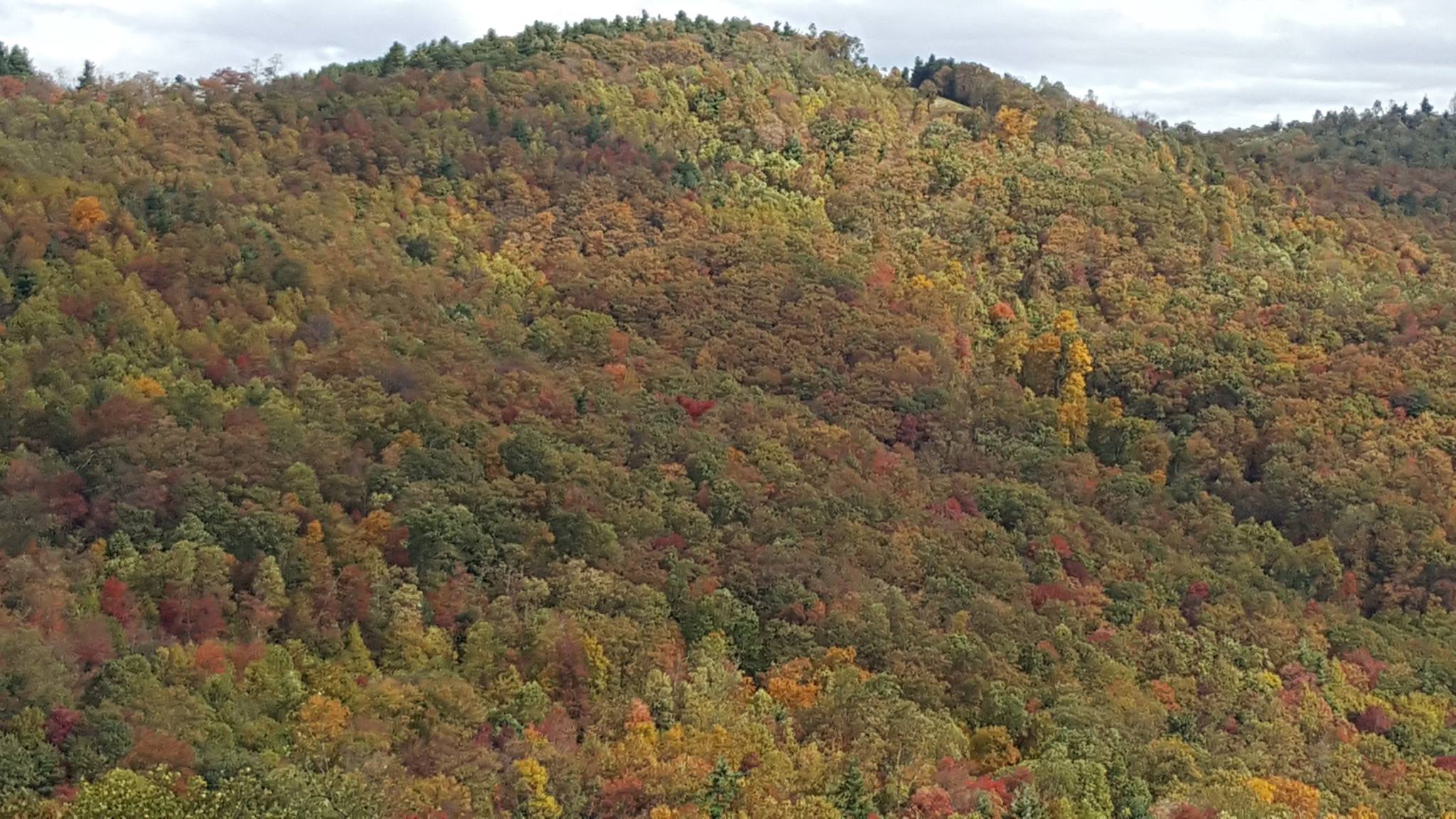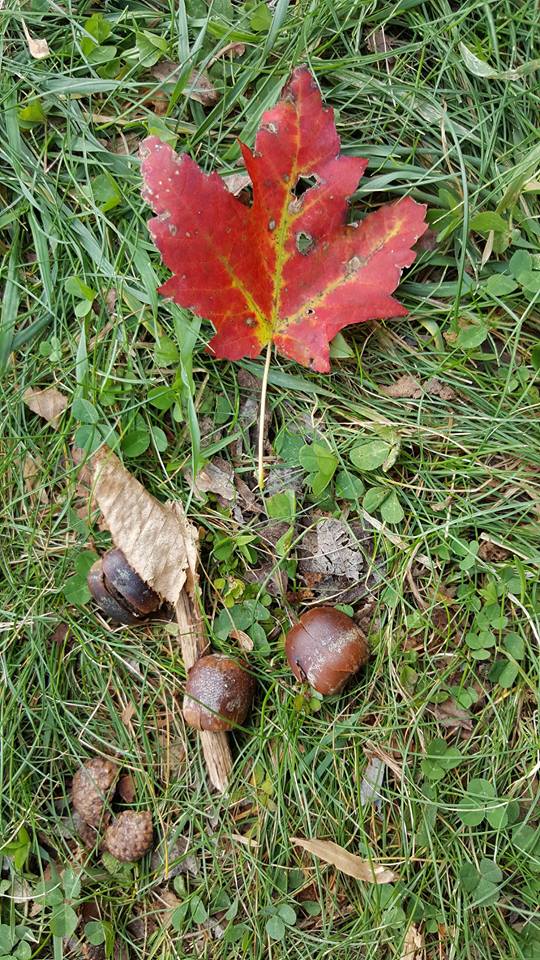
Well folks, it’s been a wild ride this fall color season. Below I summarize my thoughts on the colors this year as well as inform you that this will be my last posting for the season. The colors have mostly moved downslope and out of the High Country and some of these areas now coloring up are a little far for me to get to (considering I have another job that actually pays me!). I’ve enjoyed posting fall color reports, meeting a few of you, and answering your questions as best I could. I hope everyone who came to the High Country had a pleasant experience and will think about coming back next year, when hopefully, the leaf colors will be better. As they say, one day in the mountains is better than any day at work!
First off here’s my summary of this past season. I thought the colors were going to come early this year because of the cool and wet summer we had, but then just as they started to turn, the temperatures in the High Country shot up near 10-15 degrees above normal for several weeks in a row, and color development slowed way down. Then, we had one cool week, and they started up again, followed by more warm weather, and they stopped yet again. These up and down temperature swings surely took their toll on the trees. And on top of all that, we had Hurricanes Irma, Harvey and Nate that variously took down leaves (and trees!) throughout the mountains. All in all, the convergence of all the worst possible factors for fall color!
The wild and mild weather upset the traditional coloring up this fall season. Some trees turned early (like American ash trees), while maples were spread completely across the spectrum, with some still coloring up even now in the High Country, whereas others have been leafless for several weeks. In some areas, trees went from beginning to color up to completely leafless, as happened at Price Lake near Blowing Rock, NC.
In some areas, such as the Blue Ridge Parkway along the eastern flank of Grandfather Mountain, the colors were fairly good, as they always are in that section, while other parts of the Parkway, like The Craggies and the section between Mt. Mitchell and Chestoa Overlook, were muted or dropped their leaves prematurely. A lot of trees went straight from green to black or brown and then dropped, like many tulip poplars and birches. This asynchrony was one major factor that led to the diminution of fall colors this season.
When colors did develop, they were dominated by oranges and yellows. Reds weren’t as prominent this year, which is as I predicted, as warm weather reduces the amount of red pigment in leaves. However, when some trees did turn red, they did so spectacularly, especially among urban red maples, planted especially for their fall color, and occasional isolated red maple or sourwood out in the woods. It’s just that this year their peak color seems 1-2 weeks later than in previous years. Boone, for example, had a lot of its urban maples peaking last week, when in earlier years, they did so by mid-October.
There are still colorful areas out there. Yesterday, even though it was snowing in Boone, I headed north on the Parkway, picking it up where it crosses U.S. 421, and where it was surprisingly mostly sunny. This is a less visited section of the Parkway, but nonetheless, with spectacular views from the overlooks, some of which are as good as those from the section around Grandfather Mountain. However, the surrounding countryside is more pastoral, devoted more to cattle farming, with lush meadows and Christmas tree farms here and there. I enjoy this section for its relative isolation and lack of traffic jams at peak color time.
I found that despite this late date, there was good color in sections, although mostly oranges and yellows, but from some of the overlooks, there were smatterings of red from maples, oaks, sourwoods, and black gums. Sassafras were in good color, along with the yellow/brown magnolias, birches, and hickories.
It was hard to take pictures yesterday, as the wind was blowing about 50 mph, and it was colder than a you-know-what. But I had a lovely drive, with little or no traffic, and I recommend this section for those who want to get away from the crowds. Because the front that moved in yesterday took down the humidity, I’ll bet I could see 50-75 miles in the distance!
I will post an album with all my pictures later today. There is one blurry picture of green trees with a small cabin in it – a family used to live there, some 1,500’ below the overlook where I took that shot (Wildcat Rock Overlook). Talk about an isolated homestead – it was over 8 miles to the nearest neighbor when the family lived there! I have also posted a few shots from the Brinegar Cabin, which was put up at the turn of the 20th century. I asked the National Park interpreter, who was spinning yarn in the cold cabin, where the outhouse was – she said there never was one. The family just went in the woods. Now, that’s about as back to nature as you can get! Not sure I would be up to spending decades without a flush toilet. We are so used to our material comforts these days that we forget how it was just 100 years ago.
If you’re still up for fall color viewing this season, I recommend you head to areas below 2,500’ now, places like Chimney Rock, Gorges, and Stone Mountain State Parks. There may even still be color in the Smokies at the lower elevations. And if you head up the Parkway into Virginia, which is even further behind, you might be able to catch some color there.
I hope you’ve all had a good fall color season, and I’ll see you next year. On occasion I’ll post tidbits I find about trees, ecology, or the like on my Facebook page. Don’t hesitate to send me a note if you have any questions about nature, trees, or ecology, and I’ll see if I can answer them. See you all next year!
